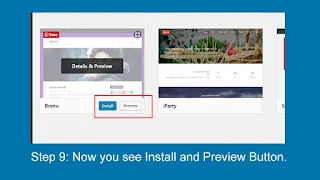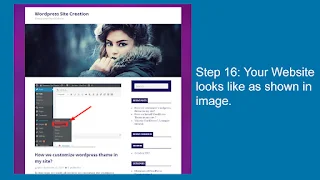
In my last post, we discussed white hat SEO and why it’s the best way to approach driving traffic to a site and obtaining a good ranking in the SERPs. We touched briefly on a black hat and why it’s a dangerous practice which is likely to get a site plummeting down the ranks, but what about grey hat SEO?
What is Grey Hat SEO?
It is what its name suggests. It’s somewhere in the middle of white and black and if used by a professional, can still be effective. However, it’s safe to say that taking a grey hat approach is playing with fire if you’re not 100% sure of what you’re doing and since we’re predominantly content-led now, it’s not something I would recommend.
The grey hat consists of techniques such as:
- Cloaking
- Purchasing old domains
- Duplicate content
- Link buying
- Social media automation and purchasing followers
Let’s look at each of these in turn.
Cloaking
Cloaking is a practice that shows the user a different result than it does the search engine. For Google, it’s considered to be a high-risk practice that is in violation of its rules. Personally, I would put cloaking in the black hat category and many would agree, but the jury’s still out in certain parts of the SEO community where it actually falls.
As you can see from the Matt Cutt’s video, cloaking is not something that he or Google bots approve of. Cloaking can be achieved by altering meta information so that it doesn’t reflect the content and tampering with the IP address of a site.
Doorway pages can also be considered a form of cloaking and are large sets of pages which are each optimised for a keyword or phrase in order to direct the user to one site. Again, they are designed to manipulate bots and trick users into visiting a site they didn’t intend to. These can also be multiple pages on the same site that have keywords such as locations so that the site can take advantage of as many keywords as possible.
Old Domains
The web is a font of old domains that have been abandoned and those that the owners don’t use much and these are often used as a way to create backlinks in order to improve rankings. Generally, these tend to be authoritative domains so that the link appears to be of a good quality.
Duplicate Content
Content, content. It’s the kingpin of the internet and all SEO efforts. We mentioned text spinners before and whilst a small proportion of these can be effective, it’s still a very dodgy idea to use them. To illustrate, I’m going to take some of the text from this article and put it into a free, online text spinner to show you the results.
In my last post, we talked over white cap SEO and why its the most ideal approach to approach driving movement to a site and acquiring a great standing in the SERPs. We touched quickly on dark cap and why its an unsafe practice which is prone to get a site falling down the ranks, however, shouldn’t we think about ash cap SEO?
As you can see, I’ve taken the first paragraph and put it into a spinner and it really doesn’t do the job, does it? In fact, it’s laughable. It’s also something that Google algorithms would recognize and push down the rankings due to grammatical errors.
Now, whilst this is a free spinner, you can get paid ones that do a slightly better job, but you’re better off investing in a professional content writer if you haven’t the time or skill to do it yourself.
In the interests of science, I signed up for a paid text spinner, which gives you the option of rewording yourself.
For a package that costs $47pm, I’d rather rewrite it myself, if I were that way inclined, as it’s hardly difficult. However, you can proceed to the next step which allows you to let the software do the work for you and here are the results:
In my last post, we discussed white hat Search Engine Optimization and why it’s the most effective method to move toward driving website traffic to a website and acquiring a great rank in the SERPs. We touched briefly on a black hat and why it’s a hazardous practice which is likely to obtain a website dropping down the ranks, but just what concerning grey hat Search Engine Optimization?
Whilst it’s better quality than the free spinner, it still has its problems and is something that I wouldn’t be happy appearing on my site. The paid version allows you to check that the content is unique via a Copyscape API, but that won’t overcome the grammatical errors that Google will pick up.
I haven’t included any links to these spinners, they are easy enough to find if you feel the need to use them.
Purchasing Links
One word of advice: don’t. If you get found out, you will get a penalty, it’s as simple as that and all of the investment you have put into your site will be worth zero. However, you can list your site on relevant industry directories as this is approved of.
There have been a lot of scare stories relating to guest posting and if this constitutes buying links, but if no cash is exchanged, then this is irrelevant. However, links can be exchanged for sponsorship of events (for example) and this is OK too.
Social Media Automation and Buying Followers
By social automation, I’m not talking about using tools such as HootSuite or Buffer to schedule posts. These are legitimate tools that help to save time when you’re managing multiple accounts.
However, you can get other tools that auto-follow and unfollow 1000s of social media users without you lifting a finger for as little as a fiver for 5000. This is one of the few here that can be called strictly grey hat as it’s not made it to Google’s blacklist yet, possibly as social signals are only just becoming important to search engines.
Buying followers may seem like a great idea to make it look like you’re in with them in the crowd, but all it actually means is no engagement and the risk of infecting any true followers with malware in some instances. There are no positives to it and it’s easy to tell those that have, as they have a Twitter following filled with faceless profiles. Organically obtaining a following isn’t necessarily an overnight affair, but it’s worth it in the end.
What does all this mean?
Some SEO companies use grey hat tactics, but the best ones don’t. The short-term advantage, much like the black hat (and many of these tactics overlap into the black hat) don’t make for a long-term business. Whilst grey hat might gain you some traffic initially, it won’t last, especially if you get caught out.
In essence, with modern content marketing and SEO, white hat wins out. The web is highly competitive, we all know that and so in order to ‘beat the system’, the best way is to work with it and invest in the future of your site.
Like anything in life, taking shortcuts to get you where you want to be right now is often the path to failure. Great SEO, good content and a well-planned out business, that’s what will give your site the competitive edge in the end.
And, if possible, a large budget!
























